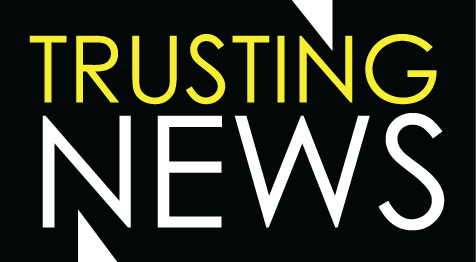Story Topics
Capitol Times People’s Agendas
Milwaukee Journal Sentinel uses Instagram to explain shooting coverage
WITF box explaining late election results
Trust Tip #89: Prepare your audience for what to expect on Election Day (and beyond)
News Tribune editor responds to comments
Fulcrum Voter FAQ
Chalkbeat Philadelphia asks for reader feedback
FiveThirtyEight’s disclaimer about polls
CPR’s guide for covering 2020 elections
News Tribune note about election coverage
PEN tip sheet for discussing misinformation
Austin Statesman’s contact page
WCPO asks viewers for candidates questions ahead of election
Green Bay Gazette letter to the editor process
Green Bay election guide
WCPO elections basics box
Colorado Sun explains approach to 2020 election coverage
Atlanta Journal-Constitution asks for public’s election questions
WCPO explains coverage decisions
Trust Tip #86: Provide support (not anxiety) during elections
Trust Tip #83: Create an FAQ about your elections coverage
Trust Tip 82: If your coverage is nonpartisan, explain and defend that
Trust Tip 81: Help your audience consume polls responsibly
WCPO explains how political advertising works
Trust Tip 80: Explain how political advertising works
Trust Tip 77: Solicit (and answer) live questions about voting
Trust Tip 76: Take extra care when covering conspiracy theories (and tell your audience)
Trust Tip 74: Explain why a story is being done and encourage audience participation
Trust Tip 73: Learn how people perceive your election reporting
LAist provides synthesized information about coronavirus
PolitiFact explains fact-checking process
AJC explains approach to covering big story
Trust Tip #71: Acknowledge what you don’t know
Trust Tip 68: Do not neglect basic but vital pandemic information
WEWS combats misinformation about COVID-19 deaths
ProPublica transparency around fair news
Trust Tips 67: Demonstrate visual balance in political coverage
Atlanta Journal-Constitution on covering legislature
Atlanta Journal Constitution front page
Philadelphia Inquirer shares tips for finding trustworthy news
Day subscription plea during coronavirus
Vox support plea for explanatory journalism
Trust Tips 66: Show you’re part of your community during COVID-19
Trust Tip 65: Help your audience navigate the news
Trust Tip 64: Disclose stimulus funds and explain the ethics involved
The Day asks community for support during COVID-19
WCPO explains how their COVID-19 coverage different from competitors
WJXT4 explains beach visuals during COVID-19 aren’t altered
Milwaukee Journal Sentinel explains visuals aren’t altered
Trust Tips 63: Demonstrate that your visuals aren’t manipulated
PA Post explains story selection process
Atlanta Journal-Constitution community support during COVID-19
How the San Fransisco Chronicle cover candidates
AJC focuses on solution-based opinion content during coronavirus
Fort Worth Star-Telegram paywall during COVID-19
Trust Tips 62: Tell your audience that COVID-19 information might change
Caller-Times explains coverage
NYTimes explains breaking news during coronavirus pandemic
WEWS coronavirus explainer
Toronto Star creates new labels for opinion content
NPR creates accuracy checklist for reporters
NPR changes design for labeling opinion stories
Philadelphia Inquirer labeling opinion content
NPR explains non-pandemic related investigation
KVRR brings on expert to answer user’s questions about COVID-19
Buzzfeed shares mission with coronavirus coverage
Trust Tip 61: Do these four things right now to show you are trustworthy
Atlanta Journal Constitution explains COVID-19 coverage
Trust Tip 60: Don’t let political squabbles dominate COVID-19 coverage
CalMatters asks for reader feedback during coronavirus outbreak
Atlanta Journal Constitution shares approach to coronavirus coverage
WCPO shows breadth of journalism with Acts of Kindness series
Arizona Daily Star explains how COVID-19 coverage affects bottom line
Coloradoan explains missions, goals with COVID-19 coverage
Virginian-Pilot highlights solutions, community resources during coronavirus outbreak
Tennessean adapts coverage during COVID-19 pandemic
Daily Telegraph gives answers reader questions during coronavirus outbreak
Guardian adds editor’s note about how newsroom covering coronavirus
Bozeman Chronicle explains changes during COVID-19 outbreak
WPCO adapts coverage, production during coronavirus outbreak
Atlanta Journal Constitution explains how coverage adapting during coronavirus outbreak
National Geographic combats spread of “fake news”
Trust Tip: Tell your audience you won’t tolerate misinformation
Trust Tip: Engage on social media during COVID-19
Bangor Daily News shares mission, goal for coronavius coverage
Columbia Dispatch shares mission surrounding coronavirus coverage
WCPO share goals, mission surrounding coronavirus coverage
Coloradoan comment moderation during Coronavirus outbreak
The Coloradoan moderation during Coronavirus outbreak
The Day explains why Coronavirus coverage is free
San Fransisco Chronicle talks to subscribers about covering Coronavirus
Coloradoan explains Coronavirus reporting approach
NBC asks questions, shows reporters are real people too during COVID-19 outbreak
San Fransisco Chronicle uses bot to reach users during Coronavirus outbreak
WCPO explains reporting process during Coronavirus pandemic
Christian Science Monitor asks for audience feedback during COVID-19 outbreak
WCPO explains changes to newsgathering with coronavirus
WMAR explains Coronavirus reporting process, asks for feedback
WEWS explains Coronavirus coverage
Coloradoan shares mission during Coronavirus outbreak
Trust Tip 56: With coronavirus coverage, make your purpose clear
Trust Tips 49: Explain that some journalists are biased on purpose
Corpus Christi Caller-Times uses editor’s note for transparency with opinion piece
Science News newsroom process
KPRC crime guidelines
WCPO explains its coverage of presidential candidates
Trust Tip 40: Explain where opinion content comes from
Trust Tip 31: When you’re right and other news outlets are wrong, tell your audience
Trust Tip 28: Explain who writes an editorial (and who doesn’t)
Today’s trust tip: Clearly label opinion content
Discussing Sports Coverage in Facebook Comments
Using Facebook LIVE to Fact Check
WCNC Fact-checks a Viral Post on Social Media
Trust Tips 2: Explain how you decide which stories to cover
Explaining Word Choice and Asking for User Feedback
Reminding Your Audience You Want Their Help
Encouraging Civic Responsibility by Registering People to Vote
Video: How to Submit a Letter to the Editor
Explaining Your Election Coverage Mission
Breaking Down a Story by Sharing Who You Talked To
Explaining the Editorial Page
Creating Story Pages Online to Link Coverage
Creating Community by Creating a Facebook Group
Explaining Coverage Decisions Using Facebook
Highlighting Award-Winning Journalism Using Facebook
Explaining Coverage on Divisive Issues Jefferson City
Highlighting Award-Winning Journalism Using Twitter
Anticipating Negative Feedback and Addressing it Directly
Explaining Your Editorial Process
Clearly Identifying and Sharing Community Guidelines for a Facebook Group/Page
Explaining Opinion Coverage
Explaining Opinion Coverage Using Facebook Live
Responding to Criticism and Explaining Breaking News
Correcting a Mistake Involving National News
Ask Users: What Questions do you Have?
Responding to User Criticism by Adding an Editor’s Note
Explaining Reporting Process in TV PKG
Explaining Reporting Process During Breaking News
Explaining Coverage Decisions: Political Coverage
Explaining Coverage Decisions on Facebook: Crime
Explaining Coverage Decisions: Crime
Responding to Critical Facebook Comments
Explaining Your Coverage: Crime
Explaining News Coverage: Mugshots
Explaining News Coverage: Guns
Explaining Olympics “spoilers” at USA Today
Explaining News Vs. Opinion
Explaining Letters to the Editor
Explaining Coverage Decisions: Officer Involved Shootings
Handling a sensitive story at WITF
Explaining the editing process at WITF
Addressing concerns over breaking news at WITF
Hashtagging story types at The Virginian Pilot
Labeling fact-check stories at The Coloradoan
What are we Missing? Asking for Story Ideas
Highlighting Multiple Perspectives Using Pull-Out Box
Promoting civility and generating discussion at The Tennessean
Showing depth of coverage at Community Impact Newspaper
Fresno watchdog story
Remind your community about your mission and purpose. Tell them you work on behalf of the public. Use specific language and strong words, like watchdog and investigation, rather than hoping those concepts are clear.
Ogden behind the scenes pornography
Ogden behind the scenes football photos
FW crime invite
Newsy Trump coverage
Look for chances to tie individual coverage to your organization’s mission. In this case, Newsy didn’t just share a fact check. They used the words “fact check” to make sure the point came across, and they reinforced their core principles.

